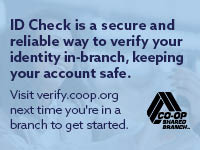How to Protect Yourself Now
There’s a lot of advice about how to deal with identity theft around these days – some helpful, some unrealistic, and some a little ridiculous. We’ve done the research for you and present the following easy-to-do, indispensable steps. These items should be considered MUST-DOs if you’re serious about minimizing the effect identity theft can have on your life.
- Don’t leave printed personal and/or financial information lying around at home.
This is a no-brainer, right? Yet more often than not, identity thieves are friends or relatives of the victim who get their personal information offline – not electronically. Keep checkbooks, social security information, billing information, and anything else a thief could use to steal your identity out of sight and secure. - Minimize the risks posed by mail theft.
Shred bank and credit statements and credit card offers by hand before throwing them away. Even better, get a crosscut shredder. Don’t mail checks from your home mailbox. Instead, drop them off at a U.S. Mailbox or the U.S. Post Office. Also, have new checks delivered to your bank, not your home. - Get and review your bank statements electronically.
View your personal finance statements electronically at least twice a month. By doing this, you will spot a fraud much sooner if it happens. Catching a fraud early minimizes the damage thieves can do and usually results in less time and money spent resolving problems. - Subscribe to a service that will provide you with a copy of one of your credit reports and FICO® scores on a regular basis.
By monitoring your report and your FICO score for any changes you can’t account for, you’ll know if someone has applied for credit in your name. - Check and review your FICO scores and credit reports at least once a year.
When you look at your reports, make sure you recognize all the account information listed. If you see anything you can’t account for, get to the bottom of it as soon as you can. As with electronic statements, checking your FICO scores and credit reports is one of the most sure-fire ways to spot a fraud quickly and minimize any damage done. - Avoid giving out your Social Security number whenever possible.
Your SSN is the key to your credit reports and banking accounts and is the prime target of criminals. Anyone who already has your social security number (along with other information) already poses a risk: your doctor’s office, accountants, lawyers, loan officer, health insurance, schools, courts, etc. Shady employees at any of these places could steal your identity, so be very choosy about to whom you entrust it in the future. Never put your social security number on your checks or your credit receipts. If a business requests your SSN, ask to give them an alternate number (such as a driver’s license) instead and tell them why. If a government agency requests your social security number, there must be a privacy notice accompanying the request. - Secure your home computer.
Install a firewall and buy virus-protection software, and if you dispose of a PC, remove your data with a “wipe” utility program (erasing files manually isn’t the same thing). - Be smart about choosing passwords.
When choosing passwords, assume that someone already has a bunch of your personal information and is trying to break into your accounts. Don’t use the same password for all your accounts. Avoid using your SSN (or even a part of it), you or your mom’s maiden name, birth date, middle name, pet’s name or consecutive guessable numbers for passwords. If you have trouble remembering hard-to-guess passwords, write them down and keep them somewhere secure – hide them in a locked drawer, for example. It’s a bit of a hassle, but it’s nothing compared to having your identity stolen.
Signs of Identity Theft to watch out for
- Unexpected phone calls from creditors.
If you get a call from a creditor demanding payment for a purchase no one in your family can account for have the caller give you all the information possible and investigate. - Strange credit card charges.
It’s easier to spot these if you keep all your receipts and reconcile them with your statements each month. - Getting turned down for credit unexpectedly.
This is one of the more common ways victims discover they’ve been victimized – don’t be one of them. Subscribe to a service that will provide you with a copy of one of your credit reports and FICO scores on a quarterly basis. - Account usernames and passwords or ATM PINs stop working.
This suggests that an identity thief may have changed your access codes. - Missing bills
If you’re used to getting billed for services you subscribe to and the bills stop arriving, it could mean an identity thief has changed your address in order to use bank accounts without raising suspicion. - Strange information in your files.
If information in a personal file definitely does not match up with you, it could be simply a case of mistaken identity – or it could be more than an innocent mistake. One way to help avoid mistaken identity problems is to use your middle name or middle initial on applications to help distinguish you from others who have the same name.
What to do if Identity theft strikes
- Call the credit bureaus and get their help.
TransUnion Fraud Assistance Department: 800-680-7289Call the number above. In 24 hours or less, a fraud alert will be put on all your credit reports, alerting creditors to call for permission before opening any accounts in your name. Unfortunately, creditors aren’t required by law to pay attention to fraud alerts, so you’ll have to check your credit reports frequently to make sure no new accounts are opened. If you live in California, Texas, Louisiana, or Vermont, however, you do have the right to put a credit freeze on your account – this will stop any attempt to open new accounts in your name. When you get your credit reports, make a note of your account number – you’ll need it when you talk to the agencies. Also, add a victim’s statement to each of your credit bureau reports asking creditors to contact you in person to verify all applications made in your name.
- Lock thieves out of your accounts by changing all your account access information.
Change your account passwords to something unguessable. Contact your banks and have them help you obtain new account numbers for all your accounts. Pick a new PIN number for ATM and debit cards. Close all credit card accounts and reopen them with new account numbers. You may want to contact the Social Security Administration at 800-772-1213 to get a new SSN. You also may want to contact your telephone, long distance, water, gas and electrical companies to alert them that someone may try to open an account in your name. You may need to change your driver’s license number if someone is using yours as an ID – go to the Department of Motor Vehicles to get a new number. Contact telephone and utility companies to prevent an ID thief from using a utility bill as proof of residence when applying for new credit. - Report the crime to all relevant authorities.
Call your local police department. Make sure the police report lists all fraudulent accounts. Give as much information as possible. Get a copy of the police report and send it to the creditors and credit-reporting agencies as proof of the crime. Notify the Postal Inspector if you suspect mail theft. Contact the FTC at (877) 438-4338. Fill out the ID Theft Affidavit at the FTC’s Web site, make copies and send to creditors. The agency also has an online complaint form. While their investigators only tend to pursue larger fraud cases, the FTC does monitor all levels of identity theft crimes to find patterns and breaking up bigger identity theft rings. Notify the Office of the Inspector General if your social security number has been used fraudulently. Request a copy of your Personal Earnings and Benefits Statement and check it for accuracy. - Report all fraudulent transactions to creditors.
Contact creditors for any accounts that have been tampered with or opened without your knowledge. Be sure to put your complaints in writing. Ask each creditor to provide you and your investigating law enforcement agency with copies of the documents showing fraudulent transactions. You may have to fight to get this documentation, but don’t give up. You’ll need these to help track down the perpetrator. - Keep a log of everything you do to resolve problems.
Finally, create a log of all the contacts you make with authorities regarding the matter. Write down each person’s name, title, and phone number in case you need to re-contact them or refer to them in later correspondence.
H/T Source: myFICO


